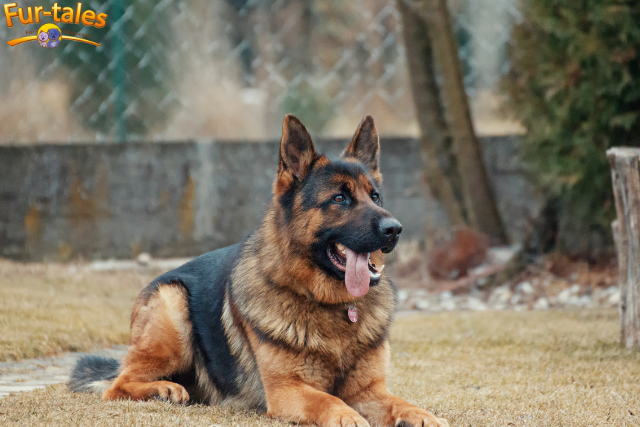
German Shepherd: From Herding Dog to Beloved Companion
The German Shepherd is one of the most recognizable and beloved dog breeds in the world. Known for their intelligence, loyalty, and versatility, these dogs have held a special place in human hearts and homes for over a century. However, the German Shepherd’s journey from humble herding roots to becoming a global icon is as fascinating as the breed itself. Let’s explore the rich history of the German Shepherd and how it evolved into the cherished companion we know today.
The Origins: A Herding Powerhouse
The German Shepherd’s story begins in the late 19th century in Germany. At that time, farmers and shepherds needed dogs that could herd sheep efficiently, protect livestock from predators, and handle the rigors of long working days. While many different types of herding dogs existed across various regions in Germany, there was no standardized breed.
Enter Max von Stephanitz, a German cavalry officer and former student of the Berlin Veterinary College. Von Stephanitz believed in the importance of developing a superior working dog. In 1899, he found what he considered the perfect specimen at a dog show. This dog, named Hektor Linksrhein (later renamed Horand von Grafrath), became the first registered German Shepherd and the foundation of the breed.
Von Stephanitz established the Verein für Deutsche Schäferhunde (Society for the German Shepherd Dog) to promote and standardize the breed. His goal was clear: utility and intelligence were paramount. He famously stated, “Utility is the true criterion of beauty.”
Rise to Fame and Versatility
Though originally bred for herding, German Shepherds quickly proved themselves in other roles due to their intelligence, trainability, and work ethic. During World War I, the German military used them as guard dogs, messengers, and search and rescue dogs. Their bravery and usefulness in wartime captured the attention of soldiers from other countries.
After the war, soldiers brought German Shepherds home to various parts of the world, including the United States and the United Kingdom. Their popularity soared as they were seen not just as working dogs, but as loyal and courageous companions.
Hollywood and the American Dream
In the 1920s, German Shepherds found fame on the silver screen. Rin Tin Tin, a German Shepherd rescued from a World War I battlefield, became one of Hollywood’s earliest and most beloved canine stars. Rin Tin Tin starred in numerous films and was credited with helping Warner Bros. avoid bankruptcy. This exposure made the breed immensely popular in American households.
Following Rin Tin Tin’s success, another German Shepherd named Strongheart also became a film sensation. The breed’s intelligence, expressive nature, and regal appearance translated beautifully on screen, reinforcing their place as treasured family pets.
German Shepherds in Service
Throughout the 20th century, German Shepherds cemented their reputation as working dogs. They became staples in police and military units around the world. Their keen sense of smell, obedience, and ability to handle pressure made them ideal for tasks such as:
-
Tracking and apprehending suspects
-
Detecting narcotics and explosives
-
Search and rescue missions
-
Service and assistance for people with disabilities
In fact, the German Shepherd was among the first breeds to serve as guide dogs for the visually impaired, thanks to their trainability and calm demeanor.
Challenges and Evolution of the Breed
Despite their many strengths, German Shepherds faced challenges over the decades. Some breeding practices, particularly during the mid-20th century, led to exaggerated features such as sloped backs. These physical changes sparked debates about health issues, including hip dysplasia and mobility problems.
However, many breeders and organizations have since focused on breeding for health, temperament, and working ability rather than extreme physical traits. Modern German Shepherds are once again celebrated for their balance of beauty and function.
The Modern German Shepherd: A Beloved Companion
Today, the German Shepherd remains one of the most popular dog breeds globally. They are cherished for their loyalty, intelligence, and versatility. While many still work in law enforcement, search and rescue, and service roles, countless others thrive as family pets.
German Shepherds form deep bonds with their owners and are known for their protective nature. They excel in obedience and agility competitions and are often involved in therapy dog programs. Their adaptability makes them well-suited for various lifestyles, provided they receive adequate training, socialization, and exercise.
Caring for a German Shepherd
Though their herding days may be behind them, German Shepherds remain active and intelligent dogs that need mental and physical stimulation. Prospective owners should be prepared to:
-
Provide daily exercise and playtime
-
Offer consistent training and boundaries
-
Socialize them from a young age
-
Maintain a balanced diet and regular veterinary care
Proper care ensures that these loyal companions remain happy and healthy throughout their lives.
FAQs About the History of the German Shepherd
Q1: When was the German Shepherd breed officially recognized?
The German Shepherd breed was officially recognized in 1899 when Max von Stephanitz founded the Verein für Deutsche Schäferhunde.
Q2: What was the German Shepherd originally bred for?
The breed was originally developed for herding sheep and protecting livestock from predators.
Q3: How did German Shepherds become popular in the United States?
After World War I, soldiers brought German Shepherds home, and stars like Rin Tin Tin popularized the breed through movies.
Q4: Are German Shepherds still used as working dogs today?
Yes, they are widely used in police, military, service, and search and rescue roles thanks to their intelligence and trainability.
Q5: Are German Shepherds good family pets?
Absolutely. With proper training and socialization, German Shepherds make loyal, protective, and loving family companions.
Image Designed Using Canva
